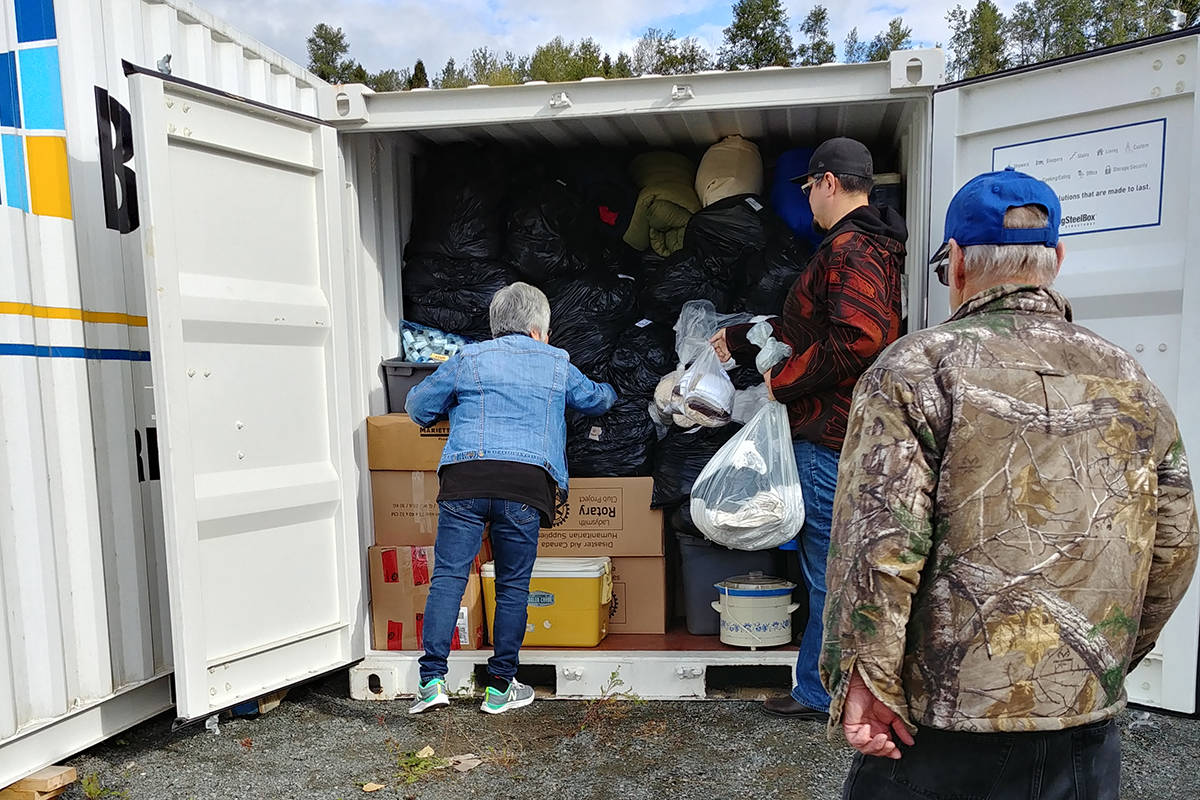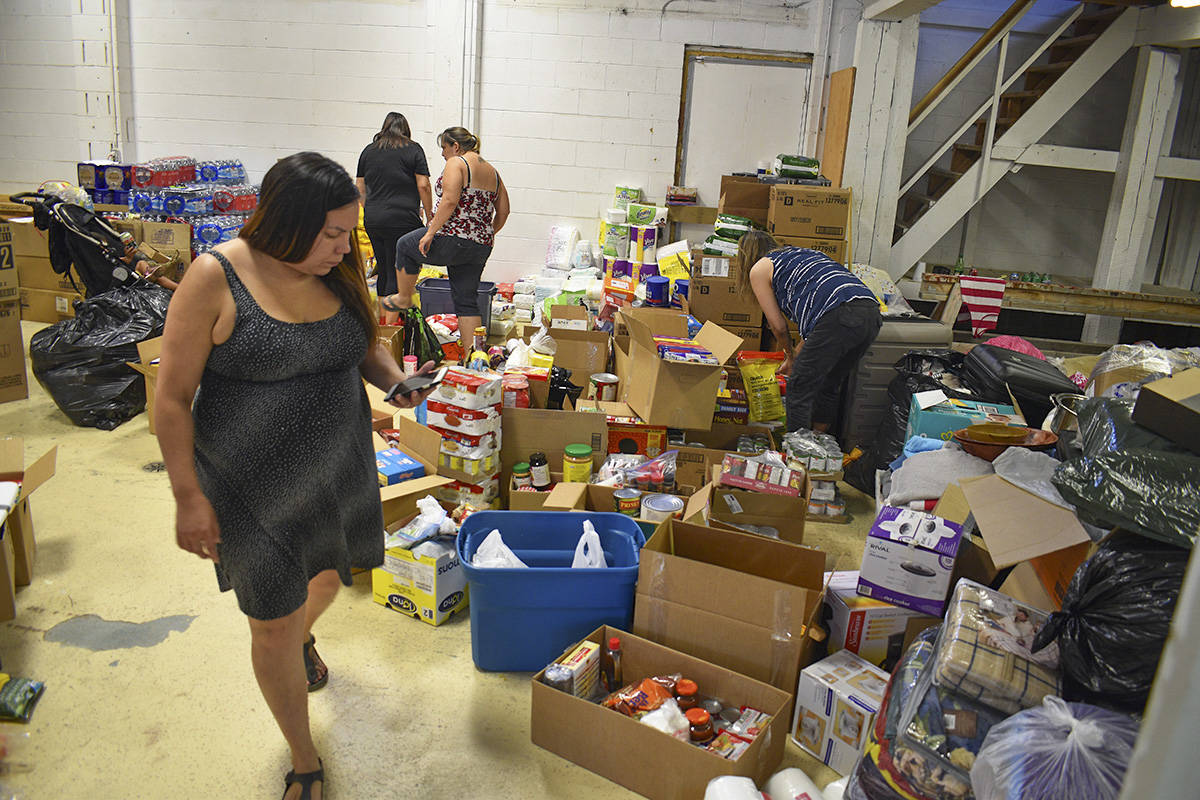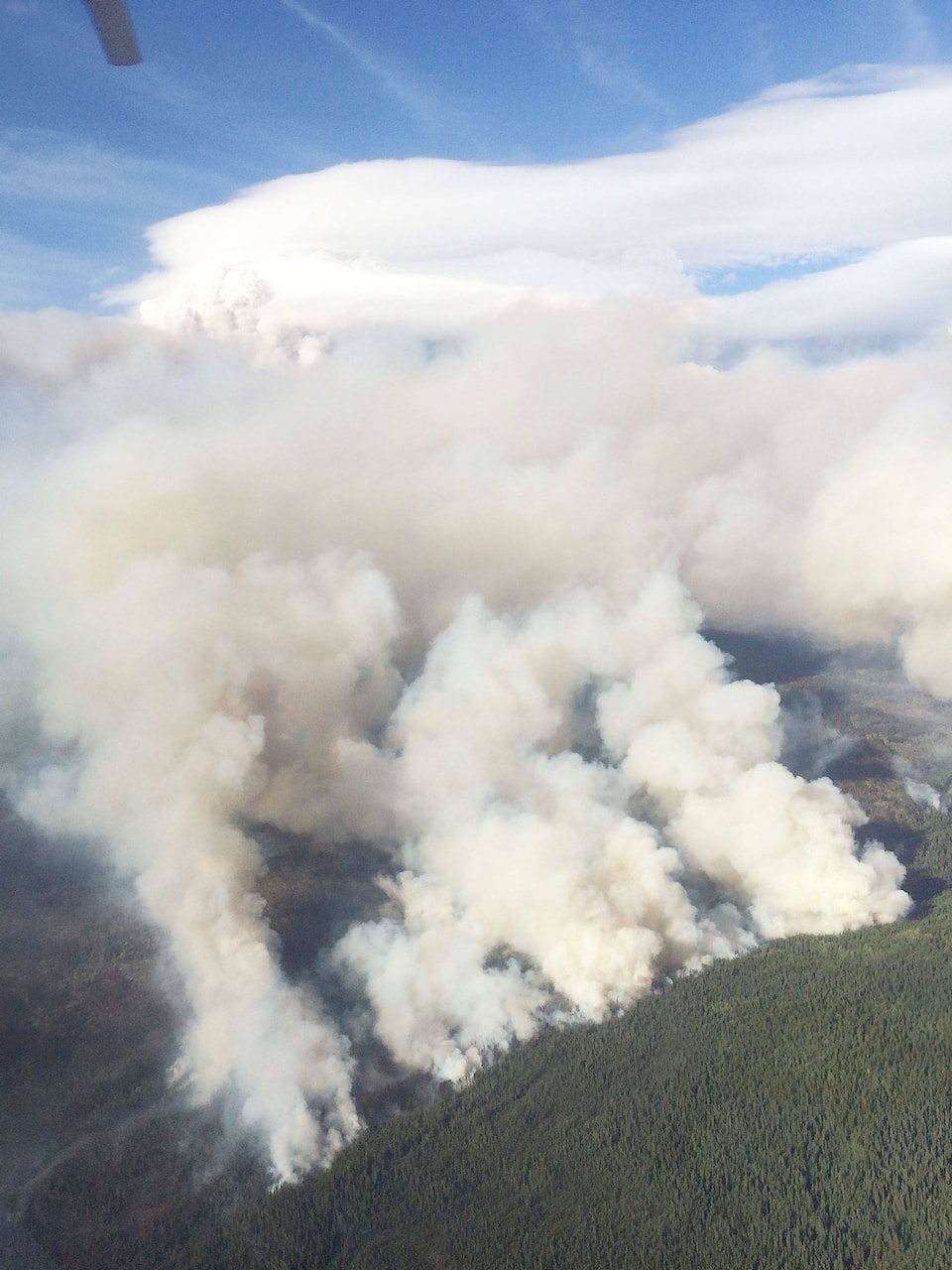It could take months before residents of Telegraph Creek can return to their community.
The devastating Alkali Lake wildfire and resulting evacuation orders has scattered the Tahltan community throughout B.C. and Yukon, as crews clear debris, repair infrastructure and secure temporary housing for those remaining in the area before winter sets in.
“We are working very hard to get our members back into their homes,” Feddie Louie, the Tahltan EOC director and recovery manager said in a statement last Friday.
“Progress is being made, but we still have a lot of work to do to make the community safe and healthy.”
Twenty-one homes in Telegraph Creek homes were destroyed by the fire, one of the province’s largest blazes in what’s the worst fire season on record, in terms of land area. Properties left standing in Telegraph Creek are mostly uninhabitable due to smoke and fire damage.
Within the community all danger trees have been removed, the septic systems repaired and slope stability has been deemed low risk. However concerns are still high over the safety of the water supply and hazardous construction materials exposed by the fire. The full scope of restoration to structures won’t be known for several weeks. Telephone service won’t be restored until mid October.
Speaking on behalf of Louie, Tahltan communications liaison Torrye McKenzie acknowledged residents are are growing frustrated.
“They want to be home and reconnect with their community. It’s understandable they’re angry and tired of living in hotels and other people’s homes, but I think there is at least a strong sense of community online. They may not be in Telegraph Creek but there’s some relief they’re able to reconnect in this way.”
Last week the Canadian Press reported Tahltan Chief Rick Mclean saying it could take months before people can return home, but McKenzie would not confirm any targets.
READ MORE: Tahltan First Nation won’t be able to return home for months after wildfires
“When it comes to construction, any date can be pushed back. So we’re keeping the timetable internal so it doesn’t lead to frustration [with residents]. We are waiting on the insurance company to finalize the agreement with the contractor so we can assess damage in the community. We have accomplished a lot, otherwise, in a short period of time. There’s just a lot of things going on and there’s a very dedicated team working on it.”
For the Tahltan and several other Indigenous communities in the province, firefighting efforts were hindered by confusion of jurisdiction between the province and the federal government, which is responsible for funding of emergency planning on reserve lands. The bureaucratic system reportedly left many poorly prepared, which both levels of government have vowed to fix.
However McKenzie said support in the recovery effort from federal, provincial and district governments has been “amazing.”
B.C.’s Minister of Indigenous Relations and Reconciliation Scott Fraser is expected to visit Telegraph Creek Oct. 10, while federal Minister of Indigenous Services Canada Jane Philpott, along with representatives from the Assembly of First Nations and the B.C. First Nations Health Authority, are scheduled to visit Oct. 16.
Private properties on district land
The Regional District of Kitimat Stikine (RDKS) hopes this week to lift its wildfire evacuation order for district lands in the Telegraph Creek area.
“We’re strongly looking at all options to possibly —and I stress, possibly —removing our order [this] week, but there are still some huge considerations and that is the well being of the evacuees impacted within the regional district,” said RDKS emergency program coordinator Rick Boehm.
Lifting the order will not affect a Tahltan Band Council evacuation order in place for Telegraph Creek and reserve lands.
Rescinding the evacuation order will trigger the cancellation of funding for emergency support services (ESS). Boehm said the RDKS wants to ensure everyone currently relying on ESS has secured winter housing before they lift the orders.
“We don’t want anyone slipping through the cracks,” Boehm said. “We need to confirm all regional district residents have found their final winter destination and aren’t displaced.”
Currently all property holders in the area are accounted for and in communication with the district, he added.
At this time the Province has opened Highway 51 to the 105-kilometre mark, but travel permits issued on a case-by-case basis are required from Emergency Operations Centre (EOC) for anyone, including recovery crews, wishing to travel beyond that point.
Up to 30 structures, including cabins and homes, were destroyed on district land to the Alkali Lake wildfire in August. The majority of losses occurred at Sawmill Lake, just north of Telegraph Creek where an additional 21 homes were lost.
Furniture and household goods needed
As Telegraph Creek residents potentially face months before they’re able to return home, donations of common household items and furniture are needed to help make the wait a little more endurable.
Evacuees are scattered throughout the province, including the Bulkley Valley.
“Everyone is really grateful for shelter, for feeling safe and being together but it’s really starting to wear on them,” said Annita McPhee, a health and social support worker with the EOC in Terrace.
Some families are moving into temporary housing, requiring home furnishings as well common household and kitchen items. Those remaining in hotels also face challenges in rooms designed only for overnight stays.
“The other day, for example, I heard someone say, ‘I just miss sitting on a couch,’ ” McPhee said. “Some hotel rooms just don’t have even a comfy chair.
“It’s been eight weeks for these people. They’re starting to feel really sad and homesick. A lot are trying to move into temporary housing because being in a hotel, you can’t even cook your favourite meal to help you feel better. A lot of the hotels don’t have ovens. Any donation would just be hugely appreciated.”
Donations can be brought to the Tahltan Fire Relief Donation Centre at 5412 Highway 16 (next to Mumfords in Terrace) from 10 a.m. to 2 p.m. The need for food and toiletries is ongoing. Any questions can be directed to Annita McPhee at 604-339-4393.
Alkali Lake wildfire still active
Firefighters pulled out of the Alkali Lake burn area Sept. 2 but BC Wildfire Service is still treating the blaze as an active.
“Smoke is visible from the air and from Telegraph Creek, so the fire is listed as ‘under control’ but it is still active, in that it’s still hazardous and a safety concern in the outback,” fire information officer Carolyn Bartos said.
The fire activity is limited to brush areas in the northern area of the fire boundary, far from populated areas, she added.
At its peak late August, the wildfire had merged with four others, covering a burn area of almost 120,000 hectares. High winds and extremely dry conditions presented a constant challenge to crews numbering up to 160 firefighters with heavy equipment and a dozen helicopters. In the early stages about 35 per cent of Telegraph Creek structures were impacted by the flames. After a month of intense structural protection efforts by firefighters and Tahltan members the weather finally shifted and the fire’s status was downgraded.
“The drought codes throughout the region were at an all-time high — everything was dry,” Bartos said. “Where people were taking refuge before, those places just weren’t safe anymore. So it was a challenge. A lot of the time it was only about protecting the line that was closest to where people lived and where they were. In that regard we did the best we could with the conditions that were presented.
“Overall the top priority during this wildfire was the protection of property and safety of people. As far as no one being injured and everyone getting out safely, we’ll take that as a success.”
quinn@terracestandard.com
Like us on Facebook and follow us on Twitter


